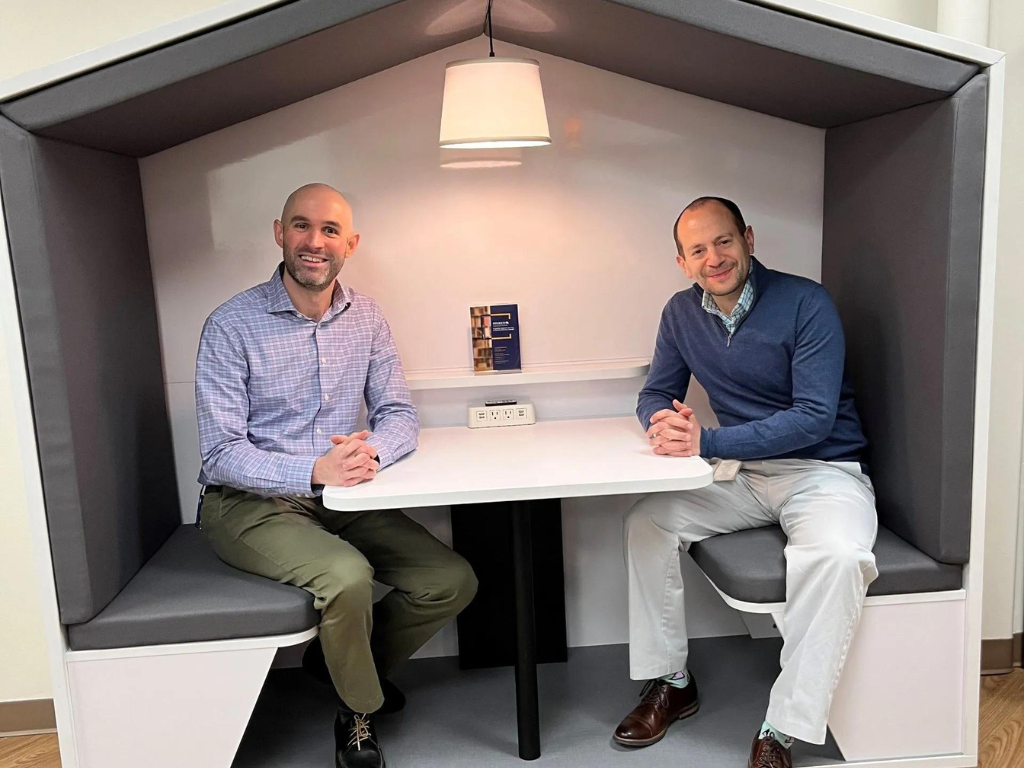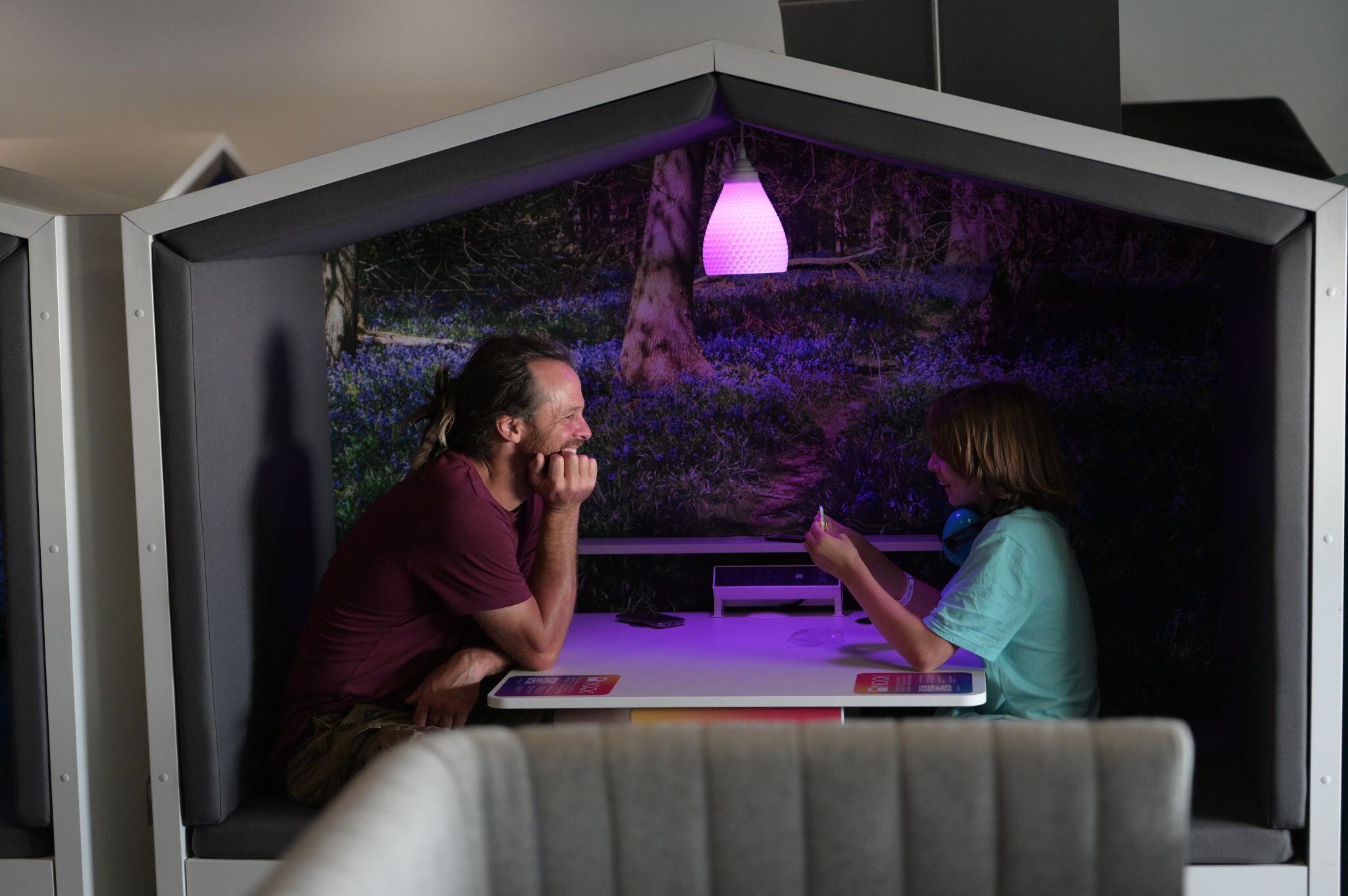5 top tips for a more inclusive office
There is a strong appetite amongst businesses of all sizes to emerge from the challenge of Covid as better corporate citizens and with a greater focus on people and productivity as opposed to where the work is done. Putting Who, How and What ahead of Where.
Making the working environment more inclusive is a powerful tool to help achieving all of the above. The problem for most decision-makers is that they simply do not know where to start.
We’ve put together a 5-point checklist of changes to consider, all of which have a positive effect in terms of inclusivity and the creation of a more welcoming working environment for every colleague.
A key aspect of inclusive design is to avoid segregating or stigmatising individuals, enabling everyone to give their best without having to make specific requests or draw attention to themselves.
Few businesses can afford an expensive total re-fit so the challenge is to work with the space available and minimise cost.
Here are some tips for achieving that:
Colour
Colour choices can have a powerful effect on mood and performance and can affect hypersensitive (pastels better) and hyposensitive (bright and bold please) people differently – a colour preference for one individual might be challenging for another.
A good way to overcome this is to keep the base pallet pastel and calming and to use splashes of accent colour in limited areas where they can be useful as landmarks to make a space easier to navigate. Zonal lighting can also ‘paint’ colour on to a space in a way which is momentarily personalisable and easily changed to imbue a zone with a different power. Keep a good distinction between floors, door frames and walls. Signage and wayfinding should make use of strong contrasts and use sans serif fonts.
Light
Natural light from windows or skylights can be very beneficial. Ensure window space is clear and clean and available. A Cornell University study found that eyestrain and headaches in employees are greatly reduced when they have the right amount of natural light in the office. When the wellness of employees is given importance, they become more productive.
Ensure that the natural light levels can be controlled throughout the day with functioning blinds. For offices lacking natural light, look at ceiling light panels which mimic skylights and consider the use of personal lamps such as those for Seasonal Affected Disorder.
Flexibility
When it comes to physical space, get flexible. Having the option to move furniture around easily to create different zones of activity means that the office works around people rather than employees having to shoehorn into fixed work-zones which may be entirely unsuitable. And make it clear that change and adaptation is encouraged. Decide yourself how best to implement that.
A mix of flexible seating options is key – from sit-stand desks to quiet pods and chairs which rock or vibrate – all allow the kind of choices which enhance inclusivity. Make sure there are options where people can work with their backs to a wall or are enclosed on 5 sides. These promote a feeling of safety and make the big open intimidating workspace feel smaller and more intimate.
Acoustics
Noise is recognised as the number one disturbance factor – particularly for neurodivergent individuals. The acoustics of an office play a key role in staff wellbeing and productivity.
Acoustic panelling used on walls and ceilings can help to absorb sound and reduce distraction. Curtains – acoustic or otherwise – are another simple tool for dividing noisy and quiet areas. On the flipside, some spaces can be too silent for occupants, making them overly aware of every action and less willing to make phone calls or vocalise ideas. In this instance, sound generation using directional speakers can help to make colleagues more relaxed. The type of sound – e.g. white noise, ambient, nature scape, café style hustle, etc – can be selected to suit the task, team or individual, and can be adjusted over time. Promoting the balanced use of headphones can also be valuable, helping colleagues to focus and shut out surrounding distractions.
The quiet and calm of acoustic pods can be a boost to productivity or an opportunity to simply unwind and settle the brain. Certainly, the increasing use of video conferencing will require such spaces – enabling employees to participate freely and openly in semi-private without disrupting colleagues or feeling self-conscious.
Take control of your soundscape. You can do much to improve it.
Management
Managing with inclusivity in mind does not mean singling people out. Rather, decisions should be taken that work for neurodivergent individuals but which also deliver clear benefits across the entire staff. Remember: Design For The Extreme Benefits The Mean.
Making a space more inclusive is not a once and done exercise. Employees should be encouraged to contribute ideas and opinions. Time and effort should be taken to regularly review changes and gather feedback.
Now is a good time to talk. Colleagues have been used to working in different ways at home – what did they like? What would they like to incorporate in the office? What simply no longer works in the post-Covid workspace?
Ultimately, making an office more inclusive does not necessitate sweeping change and expensive redesign. Relatively quick and simple adaptations can be made, over a period of time, that make the working environment work better for everybody.
If you have ambitions in this area and want to get things started, we’d be delighted to discuss your plans with you. One thing is clear – those businesses not thinking inclusively will quickly find themselves missing out on the top talent.
Ends

Nook is the multi-award-winning family of pods, shelters and booths, designed with introverts and people on the spectrum in mind and built for hybrid-workspaces, homes and the new generation of third-spaces in between.
Nook wellness pods are used globally in corporate offices, innovation hubs, coworking spaces, education settings, healthcare applications and hospitality environments and more.
Nook’s powerful wellness characteristics are built on the foundations of a mindful space which manages noise, creates a feeling of intimacy and enables personal lighting control.
Easily retro-fit to an existing environment, designed for sustainability, modularity and technology integration, Nook is a long-term asset for an organisation, especially in times where greater productivity, space dexterity and shifting workplace demographics are front and centre.



.png)
.png)
